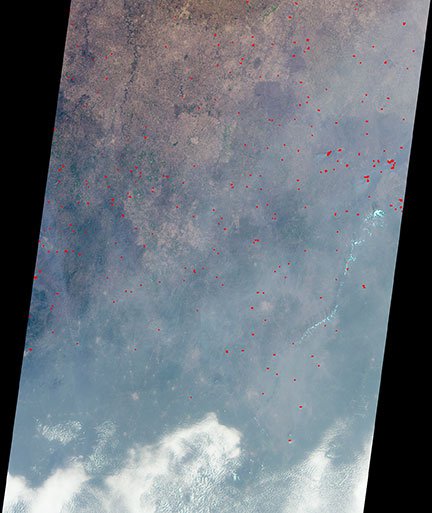Human-set Fires Inhibit Cloud Development in Africa
Every year, subsistence farmers set fire to the savannas and outlying tropical forests of Africa – in the north during the winter and in the south during the summer. All together, the carbon emissions from these African fires account for 50% of the total global fire emissions in any given year.
MISR imagery and aerosol products from Terra, in conjunction with MODIS cloud data from the Terra and Aqua, show that fires in tropical Africa significantly impair the atmosphere's ability to build rain clouds (cumulus and cumulonimbus clouds) during the dry season. A recently published manuscript in the journal Geophysical Research Letters by MISR investigators shows that, during days when smoke emissions from fires were high, convection (the process by which clouds grow) was hindered by smoke aerosol-induced atmospheric heating. As a result, clouds did not develop as much they would when the atmosphere is unpolluted.
JPL issued a press release on these findings.
